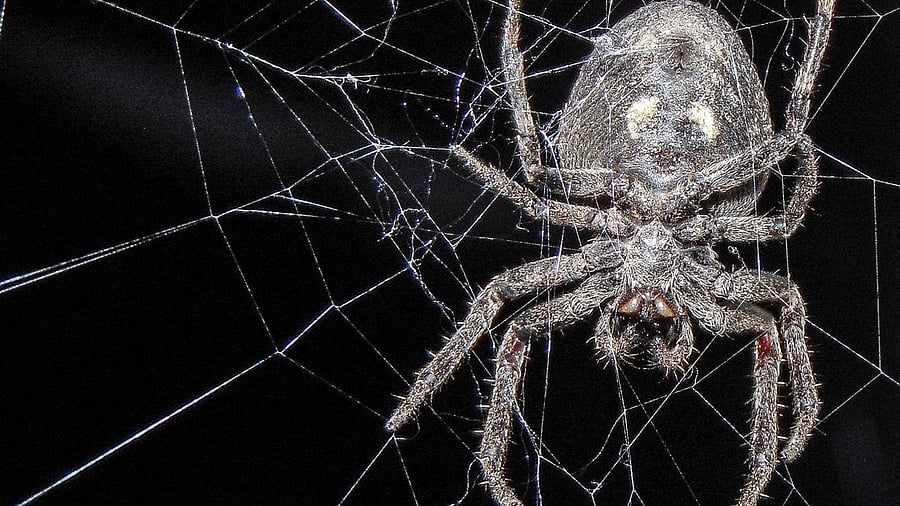
Representative image showing a Araneus ventricosus.
Credit: iStockPhoto
Araneus ventricosus, also called the orb-weaving spider species, can mimic the signals normally used by female fireflies to manipulate the flashing signals of male fireflies trapped in its web, thus attracting more males into its trap, as per findings by Chinese researchers.
The process of how A. ventricosus exploits the bioluminescent communication system of the firefly species Abscondita terminalis is explained in the study led by Xinhua Fu of Huazhong Agricultural University, China, Interesting Engineering reports.
The male A. terminalis fireflies usually attract the female fireflies with multi-pulse flashes emitted from their two abdomen-mounted lanterns. In return, the females reply with single-pulse flashes from their one lantern.
The researchers have, however, discovered that the male fireflies trapped in the spider’s web mimic the female’s single-pulse signals, an alteration of their flashing process.
The researchers study published in a biology journal, as mentioned by the publication stated, “Drawing from extensive field observations, we propose that Araneus ventricosus practices deceptive interspecific communication by first ensnaring firefly males in its web and then predisposing the entrapped male fireflies to broadcast bioluminescent signals that deviate from female-attracting signals typically made by A. terminalis males and instead mimic the male-attracting signals typically made by females.”
“The outcome is that the entrapped male fireflies broadcast false signals that lure more male fireflies into the web,” it further stated.
During the field observations, Fu for the first time noticed the pattern where male fireflies caught in spider webs but seldom found females. This compelled him to suspect that the spiders might manipulate the flashing behavior of the fireflies.
Along with behavioral ecologists Daiqin Li and Shichang Zhang from Hubei University, Fu, as a part of further investigation, conducted field experiments that confirmed the hypothesis. As per the experiment, it was observed that, in comparison to when the web was empty, the presence of the spiders increased the chance of capturing male fireflies.
The signals given out by the male fireflies trapped in the spiders’ webs showed a close resemblance to that of the free female fireflies, which is using single-pulse flashes with only one lantern, the analysis stated.
Further analysis demonstrated that the signals emitted by male fireflies ensnared in the spiders’ webs closely resembled those of free females, using single-pulse flashes with only one lantern. Instead of the males sending out a distress signal, the findings imply that the spiders manipulate the fireflies' signalling.
Li in a press release said, “While the eyes of orb-web spiders typically support limited spatial acuity, they rely more on temporal acuity rather than spatial acuity for discriminating flash signals.”
This phenomenon of manipulation can be an example of broader, yet underexplored, use of mimicry by predators in nature, the study mentioned.
Further, the plan to investigate the fireflies’ flashing patterns is directly influenced by the spider’s venom or bite, the publication added.
